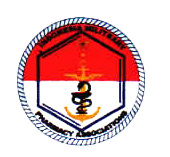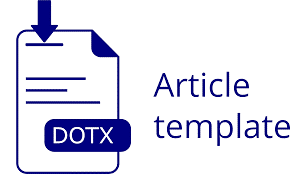The Art of Defense Diplomacy: How New Forms of Diplomacy are Shaping International Relations
(1) Universitas Muhammadiyah Malang
(2) Universitas Muhammadiyah Malang
(3) Universitas Muhammadiyah Malang
(*) Corresponding Author
Abstract
Defense diplomacy has further developed into a new form of diplomacy in international relations, which is supported by various forms of technology and also the development of social media. This research study aims to explore how this new form of diplomacy shapes international relations more broadly, as well as to determine whether defense diplomacy effectively promotes cooperation and stability among states in the context of security and defense. Then find the challenges and opportunities of defense diplomacy in the modern era. The research used mixed methods research by analyzing 244 scientific articles based on the Scopus database, Google Scholar, and Web of Science. In addition, this research also analyzed the data obtained from the VOSviewer tool. This study reveals that defense diplomacy has emerged in various forms of diplomacy, also defense diplomacy affects interactions of international relations and influences the construction of norms, identities, and interests in the international system. In terms of norms, defense diplomacy can help promote international norms related to security and defense, such as human rights and international law. In terms of identity, defense diplomacy can shape national identity in terms of defense and security. In terms of interests, defense diplomacy can influence national interests and security through cooperation in defense and reaching regional and international security agreements. Defense diplomacy brings changes in the form of building cooperation, reducing tensions, improving defense capabilities, and promoting human rights principles and international law. Through defense diplomacy, countries can strengthen international cooperation in security and defense and build strong relationships between countries. In the long run, this can help reduce tensions between countries and promote stability around the world.
Full Text:
PDFReferences
Alessa, L., Moon, S. K., Valentine, J., Hepburn, M., Kliskey, D., & Andrew. (2021). Surprise and Suspense: How the Intelligence Community Forgot the Future. The International Journal of Intelligence, Security, and Public Affairs, 23(3), 310–342. https://doi.org/10.1080/23800992.2021.2006954
Arduino, A., & Shuja, A. (2021). Russia’s Scalable Soft Power: Leveraging Defense Diplomacy Through the Transfer of S-400 Triumph. Defense & Security Analysis, 37(4), 435–452. https://doi.org/10.1080/14751798.2021.1995963
Baldino, D., & Carr, A. (2016). Defence Diplomacy and The Australian Defence Force: Smokescreen or Strategy? Australian Journal of International Affairs, 70(2), 139–158. https://doi.org/10.1080/10357718.2015.1113229
Banerjee, K., & Mackay, J. (2020). Communities of Practice, Impression Management, and Great Power Status: Military Observers in The Russo-Japanese War. European Journal of International Security, 5(3), 274–293. https://doi.org/10.1017/eis.2020.11
Bechtol Jr, B. E. (2012). Planning for the Future: Conditions of Combined ROK-U.S. Military Intervention in Potential DPRK Contingencies. The Korean Journal of Defense Analysis, 24(4), 489–502. https://doi.org/10.22883/kjda.2012.24.4.006
Budiana, M., Fedryansnyah, M., Djuyandi, Y., & Pancasilawan, R. (2019). Indonesia Military Power Under The Increasing Threat of Conflict in The South China Sea. Central European Journal of International and Security Studies, 13(4), 259–274.
Bugos, S., & Reif, K. (2021). Understanding Hypersonic Weapons: Managing the Allure and the Risks. Washington, D.C.
Cai, P. (2016). ASEAN’s Defense Diplomacy and China’s Military. Asia Policy, (22), 89–95.
Capie, D. (2020). The Power of Partnerships: US Defence Ties with Indonesia, Singapore and Vietnam. International Politics, 57(3), 242–258. https://doi.org/10.1057/S41311-019-00205-8
Carr, A., & Baldino, D. (2015). An Indo-Pacific Norm Entrepreneur? Australia and Defence Diplomacy. Journal of the Indian Ocean Region, 11(1), 30–47. https://doi.org/10.1080/19480881.2015.1018500
Chang, C. (2020). Examining the U.S. Freedom of Navigation Program: An Embarrassing Gunboat Diplomacy? Contemporary Chinese Political Economy and Strategic Relations, 6(2), 718–871.
Chang, Y. J., & Jenne, N. (2020). Velvet Fists: The Paradox of Defence Diplomacy in Southeast Asia. European Journal of International Security, 5(3), 332–349. https://doi.org/10.1017/eis.2020.16
Chaziza, M. (2021). The Belt and Road Initiative: New Driving Force for Sino-Yemen Relationship. China Report, 57(2), 229–246. https://doi.org/10.1177/00094455211004231
Clausen, M.-L., & Albrecht, P. (2021). Interventions Since The Cold War: from Statebuilding to Stabilization. International Affairs, 97(4), 1203–1220. https://doi.org/10.1093/ia/iiab084
Constantinou, C. M., Dittmer, J., Kuus, M., McConnell, F., Opondo, S. O., & Pouliot, V. (2021). Thinking with Diplomacy: Within and Beyond Practice Theory. International Political Sociology, 15(4), 559–587. https://doi.org/10.1093/ips/olab028
Grina, G. (2017). National Military Diplomacy and Its Prospects. Lithuanian Annual Strategic Review, 15(1), 153–177. https://doi.org/10.1515/lasr-2017-0007
Inkiriwang, F. W. (2020). ‘Garuda Shield’ vs ‘Sharp Knife’: Operationalising Indonesia’s Defence Diplomacy. The Pacific Review, 34(6), 871–900. https://doi.org/10.1080/09512748.2020.1772352
Inkiriwang, F. W. (2021). Multilateral Naval Exercise Komodo: Enhancing Indonesia’s Multilateral Defence Diplomacy? Journal of Current Southeast Asian Affairs, 40(3), 418–435. https://doi.org/10.1177/18681034211008905
Jaffe, P., Garretson, P., Bar-Cohen, A., Nesheiwat, J., & Mankins, J. (2016). Space Solar at the 2016 Defense, Diplomacy, and Development Technology Innovation Pitch Challenge. 67th International Astronautical Congress. Mexico: Proceedings of the International Astronautical Congress.
Jha, P., & Hue, Q. T. (2021). India’s Maritime Diplomacy in Southeast Asia: Exploring Synergies. Maritime Affairs Journal of the National Maritime Foundation of India, 17(2), 78–90. https://doi.org/10.1080/09733159.2021.2018827
Kasper, A., Osula, A.-M., & Molnar, A. (2021). EU Cybersecurity and Cyber Diplomacy. IDP: Revista de Internet, Derecho y Politica, (34), 1–15.
Laksmana, E. A. (2021). A Fragile Fulcrum: Indonesia-U.S. Military Relations in the Age of Great-Power Competition. Asia Policy, 16(4), 106–114. https://doi.org/10.1353/asp.2021.0057
Leshoele, M. (2021). Power Lies in The Barrel of a Gun: Diplomacy Without Strategic Military Capability is Futile. African and Asian Studies, 20(1–2), 77–99. https://doi.org/10.1163/15692108-12341484
McKim, C. A. (2016). The Value of Mixed Methods Research. Journal f Mixed Methods Research, 11(2). https://doi.org/10.1177/1558689815607096
Medcalf, R. (2014). In Defence of The Indo-Pacific: Australia’s New Strategic Map. Australian Journal of International Affairs, 68(4), 470–483. https://doi.org/10.1080/10357718.2014.911814
Natarajan, K. (2014). Digital Public Diplomacy and a Strategic Narrative for India. Strategic Analysis, 38(1), 91–106. https://doi.org/10.1080/09700161.2014.863478
Oyewole, S., & Duyile, A. (2021). The Enduring Relevance of Naval Power: Reflections on Defence, Security and Power Projection of Sea Frontier. AUSTRAL: Brazilian Journal of Strategy & International Relations, 10(20), 118–133. https://doi.org/10.22456/2238-6912.113269
Permata, I. M. (2019). Analisis Konstruktivisme: Perilaku Korea Utara terhadap Denuklirisasi. Andalas Journal of International Studies, 7(2), 116. https://doi.org/10.25077/ajis.8.2.104-116.2019
Sandoval, E. A. (2016). From “Failed State” to Exporter of Security? Colombia and The Diplomac of Security. Austral: Brazilian Journal of Strategy & International Relations, 5(10), 148–172. https://doi.org/10.22456/2238-6912.67313
Sankaran, J., & Fetter, S. (2022). Defending the United States: Revisiting National Missile Defense Against North Korea. International Security, 46(3), 51–86. https://doi.org/10.1162/isec_a_00426
Scopus. (2022). Elsevier B.V. Retrieved March 28, 2023, from https://www.scopus.com/
Sudirman, A., Mooy, J., Maluft, M. F., & Ramadhan. Rizki Ananda. (2019). Militarising the Natuna Islands for Indonesia’s Gunboat Diplomacy. Central European Journal of International and Security Studies, 13(4), 12–33.
Thomas, G. F., & Kline, J. (2021). The Velvet Glove That Cloaks the Fist of Power: The Role of U.S. Military Communication in Addressing the North Korea Threat. In T. A. Hollihan (Ed.), Diplomatic and Mediated Arguments in the North Korean Crisis (pp. 241–269). London: Palgrave Macmillan. https://doi.org/10.1007/978-3-030-70167-3
Wachholtz, M. F., & Soeters, J. (2022). Multinational Military Cooperation in the Global South. Armed Forces & Society. https://doi.org/10.1177/0095327x221114928
Winarto, P. O., & Sudirman, A. (2021). Penanggulangan Terorisme di ASEAN melalui Our Eyes Initiatives. Insignia: Journal of International Relations, 8(1), 71–86. https://doi.org/10.20884/1.ins.2021.8.1.2667
Winger, G. (2014). The Velvet Gauntlet: A Theory of Defense Diplomacy. In What Do Ideas Do?
Wolfley, K. J. (2021). Military Statecraft and the Use of Multinational Exercises in World Politics. Foreign Policy Analysis, 17(2). https://doi.org/10.1093/fpa/oraa022
Wu, D. (2022). Programs at the Departments of State and Defense. In Palgrave Macmillan Series in Global Public Diplomacy (pp. 15–52). London: Palgrave Macmillan.
Zaskya, A. D. (2019). Diplomasi Teknologi Indonesia dan Spanyol dalam Pengembangan Pesawat Baling-Baling. Jurnal Hubungan Internasional, 12(2), 331–348. https://doi.org/10.20473/jhi.v12i2.14544
DOI: https://doi.org/10.33172/jp.v9i1.2465
INDEXED BY:
Office Address:
Lembaga Penelitian dan Pengabdian Kepada Masyarakat
Republic of Indonesia Defense University
Jl. Salemba Raya No.14, Paseban,Jakarta Pusat, Daerah Khusus Ibukota Jakarta 10440, Indonesia
Email: jurnal.unhan@idu.ac.id

Jurnal Pertahanan: Media Informasi tentang Kajian dan Strategi Pertahanan yang Mengedepankan Identity, Nasionalism dan Integrity is licensed under a Creative Commons Attribution-NonCommercial 4.0 International License.




